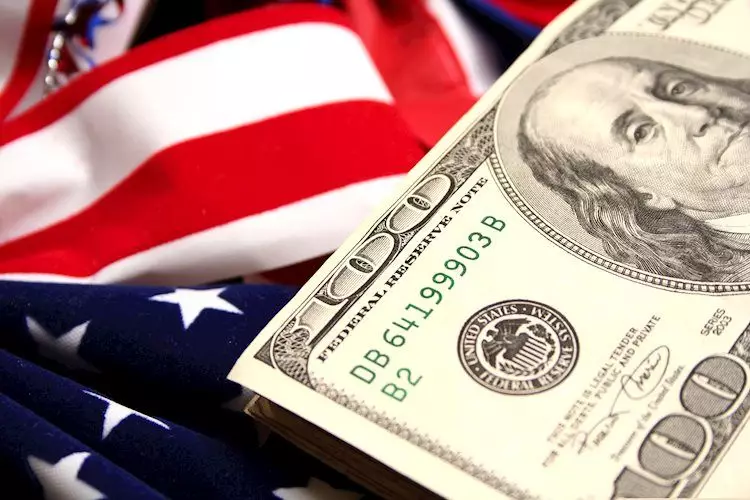As the financial world braces itself for the upcoming Federal Open Market Committee (FOMC) meeting, the US Dollar has experienced notable depreciation against a backdrop of expectations and market speculation. Analysts suggest a potential rate cut, with consensus leaning towards a 25 basis point (bps) reduction. However, a faction of the financial community anticipates a more aggressive 50 bps cut, raising questions about the Fed’s stance amid prevailing economic conditions. The falling value of the US Dollar Index (DXY), a key measure that assesses the dollar’s performance against a selection of six major currencies, underscores the uncertainty lingering in the market.
Despite the weak signals emanating from the labor market, wider economic indicators paint a somewhat resilient picture, complicating predictions about the Fed’s monetary policy. This divergence has incited discussions around whether the markets’ pricing of a 50 bps cut is overly optimistic or unjustified. As traders and investors weigh the implications of the forthcoming FOMC decision, the performance of the US Dollar will be a critical point of focus.
While the consensus hints at a 25 bps cut, a substantial portion of the analyst community believes that the current economic landscape allows for a more drastic move. The diverse opinions surrounding the Federal Reserve’s possible actions reflect varying views on inflation, employment, and economic stability. The release of the Fed’s Dot Plot will be paramount, as it will visually articulate the perspectives of FOMC members regarding future interest rate trajectories. Any shift towards a more dovish outlook could amplify the US Dollar’s weakness and reshape market expectations.
An integral component of today’s meeting will also be Jerome Powell’s press conference. Powell’s communications are pivotal in shaping investor sentiment and illustrating the Fed’s future roadmap. Clarity on the Fed’s intent regarding intervention in the economy is essential for market participants, influencing not only the dollar but also a range of assets across global markets.
The technical analysis of the DXY is revealing concerning trends that resonate with the current bearish sentiment surrounding the US Dollar. Numerous indicators paint a negative outlook, signaling potential weaknesses. One especially telling sign is the loss of the 20-day Simple Moving Average (SMA), reflecting diminishing buying momentum. Coupling this with a Relative Strength Index (RSI) that remains below the 50 mark emphasizes the prevailing bearish sentiment engraved in traders’ psyche.
Further supporting the bleak perspective is the Moving Average Convergence Divergence (MACD), which has shown lower green bars, substantiating the perception that the DXY may be susceptible to further declines. Support levels around 100.50, 100.30, and 100.00 present critical thresholds; if these levels are breached, a more profound depreciation may manifest. Conversely, resistance points resting between 101.00, 101.30, and 101.60 indicate where upward movements could find difficulty in gaining traction.
To comprehend the dynamics affecting the US Dollar, one must consider the foundational role the Federal Reserve (the Fed) plays in shaping monetary policy. The Fed’s dual mandate to ensure price stability and full employment significantly influences the dollar’s value. Historically, the currency has transitioned from being backed by gold to existing as a fiat currency post-the Bretton Woods Agreement in 1971. This transformation reflects a critical juncture in global finance, positioning the US Dollar as the world’s reserve currency.
The Fed’s primary tools—interest rate adjustments, quantitative easing (QE), and quantitative tightening (QT)—also wield considerable influence over the economy’s health. When inflation surges beyond acceptable limits, the Fed resorts to raising interest rates, particularly benefiting the dollar’s value. Conversely, should inflation dip or unemployment rise, the Fed may opt for interest rate reductions, directly contributing to the dollar’s devaluation.
In extraordinary circumstances, such as during the Great Financial Crisis of 2008, the Fed’s adoption of QE served to inject liquidity into the financial system, albeit at the expense of the dollar’s strength. QT reverses this process, as the Fed ceases purchasing bonds and restricts the flow of capital, establishing favorable conditions for the dollar.
As we approach the FOMC meeting, the apprehension surrounding the US Dollar is palpable. The predictions of rate cuts, technical indicators pointing towards bearish trends, and the broader economic narrative suggest that the next few days could be pivotal for the currency. Whatever decision arises from the meeting will not only shape the Dollar but will also echo through global markets, impacting investments and economic perceptions for the near future. As the financial landscape continues to evolve, understanding these intricate dynamics becomes crucial for stakeholders engaged in the currency markets.


Leave a Reply